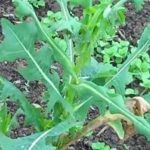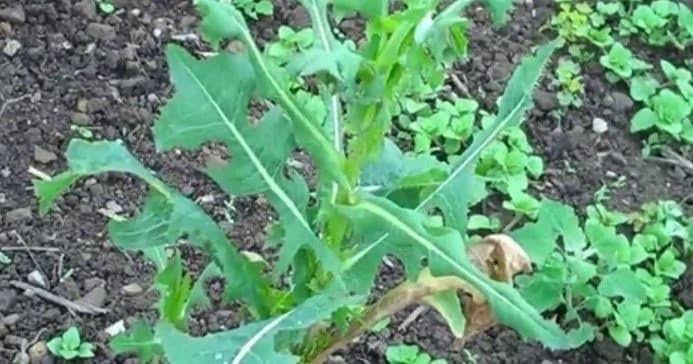Launaea taraxacifolia (synonyms: Sonchus taraxacifolius, Lactuca taraxacifolia) or Yanrin, African lettuce, Wild lettuce, Bitter Lettuce, Opium Lettuce, Dandelion greens, Poisonous Lettuce (English) or Namijin-dayii, Nomen-barewa and Nonan-Ɓarya (Hausa) or Efo yanrin, Odundun odo (Yoruba): Another wild green leafy vegetable with nutritional value and therapeutic effects
IDENTIFICATION
Launaea taraxacifolia occurs from Senegal east to Ethiopia and Tanzania. The Ethiopian highlands have been suggested as the place of origin, from where it was introduced elsewhere and spread as a weed. Launaea taraxacifolia has been domesticated as a leafy vegetable in Nigeria, and is also cultivated locally in Senegal and Benin.
Health Benefits of wild lettuce
The leaves of Wild Lettuce are eaten fresh as a salad or cooked in soups or sauces. The composition of yanrin leaves per 100 g edible portion is: water 84.3 g, energy 44 kcal, protein 3.2 g, fat 0.8 g, carbohydrate 8.3 g, fibre 2.0 g, Ca 326 mg and P 58 mg. The high content of crude fibre, protein, calcium, iron, potassium in Wild Lettuce makes it a potent nutritious food supplement to improve the health status of its consumers.
In northern part of Nigeria among the Hausas and Fulanis, this vegetable is fed to nursing cattle to increase milk production (as lactation stimulant) and to livestock (goats and sheep) to induce multiple births. A leaf extract mixed with breast milk of a nursing mother is administered medically to cure partial blindness resulting from snake bite among villagers. The leaves are rubbed on the limbs of backward children to induce them to walk in Ghana.

Credit: Legit
The leaves mixed with fine ash are rubbed onto the sores of yaws in Ghana and the boiled leaves are applied to the head of a newly-born baby if the bones have not knit together properly. It is used as a febrifuge in Benin and the plant is sometimes burnt for its ashes which are used as vegetable salt in Nigeria. Wild Lettuce is a mild sedative and nervine. It is used homeopathically for restlessness and insomnia. The sap of the plant which contains lactucarium is used instead of normal opium, because it is not addictive and large amount of it never leads to over-dosage. The sap has been anciently known to work effectively against whooping cough and brings some relief to those suffering from bronchitis. As a result of safety of use and calming effects, Wild Lettuce is a good children’s remedy.
FUTURE
Yanrin is one of the traditional leafy vegetables that are important especially in Nigeria. Selection of plants with tender leaves of low bitterness would increase its popularity. Agronomic research is needed to improve its domestication. Research into its cultivation as a vegetable and into the medicinal properties of this plant is warranted.
MAJOR REFERENCES: Sofowora, A. (2008): Medicinal Plants and Traditional Medicine in Africa, 3rd ed., Spectrum Books Limited, Ibadan, Nigeria pp199-204; Schippers, R.R., 2000. African indigenous vegetables. An overview of the cultivated species. Natural Resources Institute/ACP-EU Technical Centre for Agricultural and Rural Cooperation, Chatham, United Kingdom.
These are the thoughts of:
Sa’eed Halilu Bawa
Senior Lecturer (Associate Professor) at University of the West Indies, St. Augustine Campus, Trinidad.
Studied Food and Nutrition Sciences, Dietetics at Kaduna Polytechnic, Nigeria; Warsaw University of Life Sciences, Poland.
























